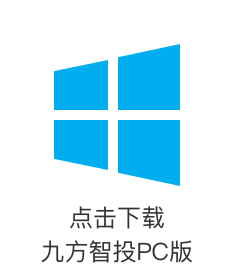Core views:
The increased penetration rate of image scanners and the profound development of the Internet of Things (IoT) are the dual drivers for the development of barcode recognition equipment. As a private enterprise with complete coverage of hardware and software products and excellent supply chain integration capabilities, it will fully benefit from the industry's development prospects. At the same time, barcode recognition as the fundamental business will continue to inject impetus into the power semiconductor sector. Based on a smart integrated device manufacturer (IDM) operating model, the Company pools the industry's finest personnel and enables the upstream and downstream synergy of the power semiconductor supply chain. Currently, the industrialization of power semiconductors is progressing smoothly. Taking into account the industry's promising prospects, coupled with the release of power semiconductor production capacity, the gradual introduction of new varieties to the market, the release of silicon carbide (SiC) power device capacity, and other investment projects, we believe a second growth curve will eventually emerge. We adopt the sum-of-the-parts (SOTP) valuation framework to derive a 2023E market cap of Rmb8.1bn, corresponding to a target price of Rmb52. We initiate coverage with a "BUY" rating.
Abstract:
The domestic leader in barcode recognition gradually builds a "smart IDM" ecosystem through M&As:
Founded in 2004, Minde has gradually expanded its business from the initial barcode recognition equipment to the distribution of electronic components and the design of power semiconductors. At present, the Company has been deeply engaged in barcode recognition equipment for nearly 20 years, and its revenue is among the top of similar companies in China. Since 2018, Minde has entered the semiconductor field by acquiring the key links including silicon & wafer processing and manufacturing, ultra-thin chip OEM with core technologies and power semiconductor design to create a new point for business growth. The "smart IDM" ecosystem has initially taken shape through the Company's independent management with strategic synergy along the value chain.
The increased penetration rate of image scanners and the rapid growth of IoT jointly drive the development of recognition equipment.
As a mature industry, the future growth of barcode recognition equipment will be primarily driven by the following factors: 1) Increased penetration rate of image scanners: With the development of quick response code (QR code) technology and the growth of application fields, etc., image scanners began to replace laser scanners relatively early on. Nevertheless, whether it is a handheld barcode scanner or a fixed industrial-type scanner, the existing share of segmented laser scanner is still above 20%, implying a large replacement market; 2) Barcode reader is an important means to achieve intelligent perception and identification, information collection and processing, and automatic control of the physical world. With the continuous development of IoT and related industries, the demand for barcode readers will increase. According to the forecast of China Insights Consultancy (CIC), the global/domestic automatic identification and data collection industry market will exceed US$20bn/reach Rmb20bn in 2026, corresponding to an average CAGR of more than 12%/14%, respectively.
Create a comprehensive product matrix covering both hardware and software, and consolidate competitive edge through supply chain integration.
After years of development, Minde has not only owned a complete hardware product matrix of barcode recognition equipment with independent development capabilities from software to hardware, but also equipped with barcode solution capabilities, which enables it to satisfy the customized needs of downstream customers. The Company utilizes a production model that combines independent design, outsourced processing, in-house assembly and testing. Under such model, robust supply chain integration capabilities ensure both the product quality and the integration of the distinct advantages of supply chain resources, and thereby improves the Company's production cost controls and further consolidates its competitive edges.
Driven by the growth of new energy, sector attributes of power semiconductors and geopolitical impact, the trend of domestic replacement is set.
Power semiconductors are the core components of the electrical energy conversion and circuit control parts in electronic devices, and are widely used in home appliances, computers, consumer electronics, automotive electronics, new energy, electric power facilities, and other fields. Among them, more than 30% of the global power semiconductors are used in the automotive industry in 2019. With the development and increasing popularity of electric vehicles and the use of green energies such as solar, wind, hydro, geothermal energy, the market demand for the development of high-performance power semiconductor devices is also growing stronger, driving its market scale to continue to expand. Insulated-gate bipolar transistor (IGBT), metal-oxide-semiconductor field-effect transistor (MOSFET), SiC power devices and Gallium nitride (GaN) devices may be the important segments to see rapid growth. The characteristics of the power semiconductor industry make it difficult to form a monopoly, and the geopolitical conflict has increased the urgency of domestic replacement. Considering that building an independent and controllable industry chain isn't too hard, domestic replacement may speed up in the next few years.
The smart IDM model and the industry-wide coverage make the second growth curve visible.
Through the smart IDM model, Minde maintains sufficient influence on the upstream and downstream companies along the industry chain without acquisition. It has the advantages of the mainstream operating models of IDM, fabless, and foundry, ensuring close cooperation between companies in the upstream and downstream of the industry chain and reducing the pressure of capital expenditure. Through the equity crossover arrangement, the incentive mechanism attracts the industry's top talent. Along with the faster industrialization of power semiconductors (capacity release, new types on the market, capacity release of SiC power devices, and other fundraising projects), a second growth curve is likely to take shape.
Potential risks: Decreased gross profit margin in barcode recognition business due to intensified competition; affected operating capacity due to core personnel loss; the uncertainty of the industry brought by international trade frictions and geopolitical factors; goodwill impairment.
Investment strategy: The increased penetration rate of image scanners and the profound development of the IoT are the dual drivers for the development of barcode recognition equipment. As a private enterprise with complete coverage of hardware and software products and excellent supply chain integration capabilities, it will fully benefit from the industry's development prospects. At the same time, barcode recognition as the fundamental business will continue to inject impetus into the power semiconductor sector. Based on a smart IDM operating model, the Company pools the industry's finest personnel and enables the upstream and downstream synergy of the power semiconductor supply chain. Currently, the industrialization of power semiconductors is progressing smoothly. Taking into account the industry's promising prospects, coupled with the release of power semiconductor production capacity, the gradual introduction of new varieties to the market, the release of silicon carbide (SiC) power device capacity, and other investment projects, we believe a second growth curve will eventually emerge. We forecast the Company's 2022E/23E/24E attributable net profit (ANP) to be Rmb82mn/184mn/397mn (+7.4%/+125.3%/+115.4% YoY), corresponding to EPS of Rmb0.52/1.17/2.53, respectively. We adopt the SOTP valuation framework and assign target values of about Rmb0.8bn/0.3bn/3.3bn/3.8bn to its barcode recognition/electronic components distribution/power semiconductors/SiC power devices for fundraising and investment projects, respectively, which add up to a target market cap of Rmb8.1bn, equivalent to a target price of Rmb52. We initiate coverage with a "BUY" rating.












